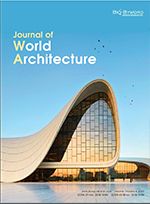Abstract
Globally, digital technology and the digital economy have propelled technological revolution and industrial change, and it has become one of the main grounds of international industrial competition. It was estimated that the scale of China’s digital economy would reach 50 trillion yuan in 2022, accounting for more than 40% of GDP, presenting great market potential and room for the growth of the digital economy. With the rapid development of the digital economy, the state attaches great importance to the construction of digital infrastructure and has introduced a series of policies to promote the systematic development and large-scale deployment of digital infrastructure. In 2022 the Chinese government planned to build 8 arithmetic hubs and 10 national data center clusters nationwide. To proactively address the future demand for AI across various scenarios, there is a need for a well-structured computing power infrastructure. The data center, serving as the pivotal hub for computing power, has evolved from the conventional cloud center to a more intelligent computing center, allowing for a diversified convergence of computing power supply. Besides, the data center accommodates a diverse array of arithmetic business forms from customers, reflecting the multi-industry developmental trend. The arithmetic service platform is consistently broadening its scope, with ongoing optimization and innovation in the design scheme of machine room processes. The widespread application of submerged phase-change liquid cooling technology and cold plate cooling technology introduces a series of new challenges to the construction of digital infrastructure. This paper delves into the design objectives, industry considerations, layout, and other dimensions of a smart computing center and proposes a new-generation data center solution that is “flexible, resilient, green, and low-carbon.”
References
Zhong J, Fu L, Ding L, et al., 2021, Planning and Design of New Infrastructure Data Center, Press of Electronics Industry, Beijing.
Lan J, Tu J, Niu C, et al., 2021, Foundation of 5G Network Technology Planning and Design, People’s Posts and Telecommunications Press, Beijing.
